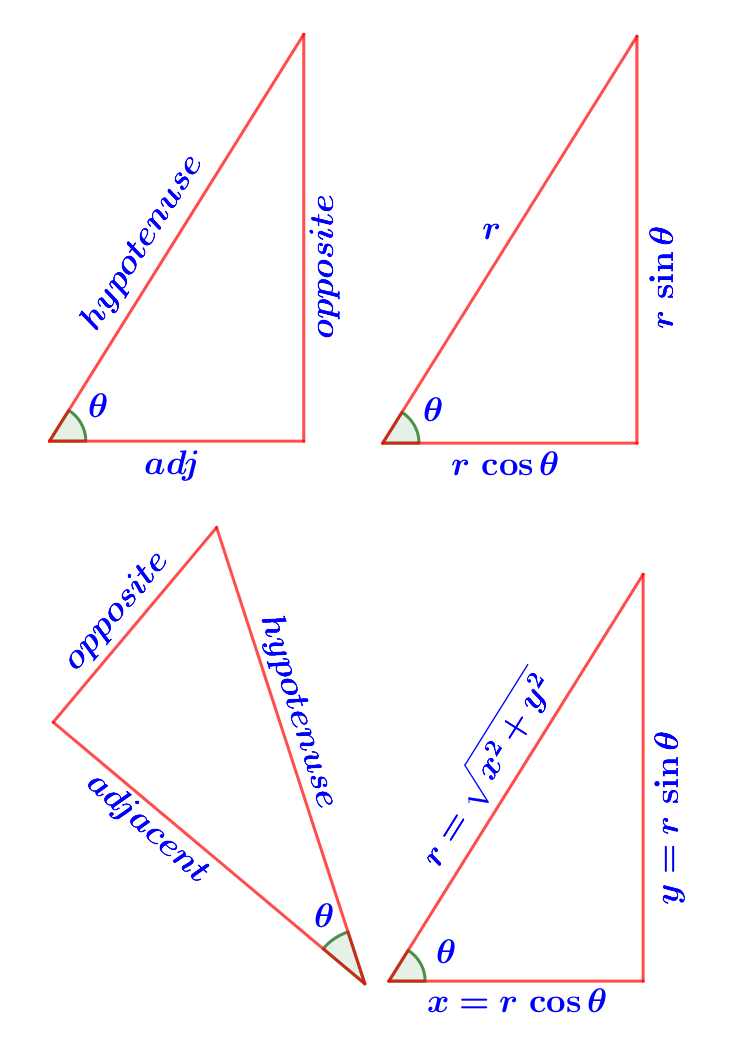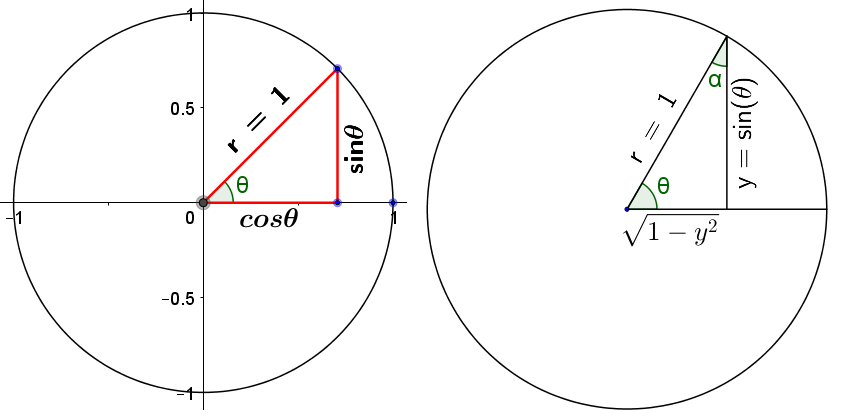Basic Trigonometry
Here we will cover the basic trigonometry definitions, holding back most of the trig identities for a later section. A large part (but certainly not all) of this subject is about right triangles and some definitions which follow are all defined in terms of right triangles and an angle named $\theta$. In these definitions, $\theta$ is never the $90^{\circ}$ angle. It will be one of the other two angles, and it must be designated before any of this makes sense. If we look Figure 1, and the angle $\theta$, we define the horizontal side next to angle $\theta$ to be the “adjacent length” side. The vertical side is called the “opposite length” side. The adjacent side is always the side that goes from angle $\theta$ to the right angle.

$\begin{array}{c} \cos\theta=\frac{adjacent}{hypotenuse}=\frac{adj}{r}\\ \sin\theta=\frac{opposite}{hypotenuse}=\frac{opp}{r}\\ \tan\theta=\frac{opposite}{adjacent}=\frac{\sin\theta}{\cos\theta} \end{array}$ $\begin{array}{c} \sec\theta=\frac{hypotenuse}{adjacent}\\ \csc\theta=\frac{hypotenuse}{opposite}\\ \cot\theta=\frac{adjacent}{opposite} \end{array}$
